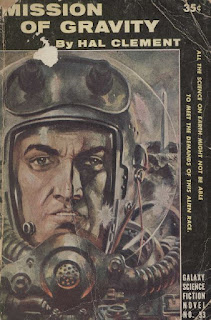Monthly Top Ten July 2022
1. Denton Welch, In Youth is Pleasure (Routledge, 1945). "Parents should understand that their young kids are not like them and need to have the privacy to fantasize both their good and bad desires," wrote John Waters in Role Models about In Youth is Pleasure, "maybe...no better novel in the world." Welch allows his fifteen-year-old protagonist, Orvil Pym (an obvious stand-in for Welch), that privacy. On a summer vacation in a small English town, Orvil gives vent to an indelibly etched queer disaffection. He engages in perversities that render the novel just as shocking today as it was 80 years ago. But to catalogue those would be to ignore his vivid interior life where he holds forth on the superiority of stairs over elevators and feels "small and lectured" when in contact with humanity's impoverished life options. Best line: "He hated the man because he had talked to him." A true punk in the making.
7. The Pornographers: Introduction to Anthropology (Shohei Imamura, 1966). The subtitle is more appropriate to Nosaka's studious novel since Imamura approaches his adaptation as if he were in a food fight. Drunk on new wave possibility, he splatters the celluloid with freeze-frames, gorgeously cramped compositions, and a dead husband reincarnated as a huge carp that keeps popping up in the frame.
8. The Bear, "Season 1, Episode 7: Review" (Christopher Storer, 2022). Yet another television serial that loses sight of its larger narrative arc. Renowned chef Carmy (Jeremy Allen White, a doe-eyed wonder) returns to Chicago to take over his recently deceased brother's beef sandwich shop. He cannot get his ragtag crew to work in sync and the enterprise reaches destruction with this climactic episode. 20 minutes where the other episodes are 30, shot mostly in one take with Wilco's "Spiders (Kidsmoke)" motoriking on the soundtrack, every person is for themselves and they fail to open the restaurant for the day. It's a masterpiece of tension; 20 minutes is about all anyone could take. But then, in the next and final episode of the season, the blows are absorbed and it's as if the meltdown never occurred. How they still have customers at this point is never made clear. Why don't the creators take these moments as opportunities to generate more stories rather than inconsistencies to ignore?
9. David Hepworth Deep 70s (Underrated Cuts From A Misunderstood Decade) (Edsel, 2022).
This four-disc, 71-track box comes from a bad place. Born in 1950, author of 1971 – Never a Dull Moment: Rock's Golden Year, Hepworth in his godawful liner notes claims he's not nostalgic for the 1970s. But several paragraphs of generalizations and strawmanning about this "uniquely febrile period of popular music" prove that nostalgia is exactly what he's pimping. He doesn't even explain why the decade is so misunderstood, his only argument "some kind of
counter-argument against those who think the 70s were just about flares
and long guitar solos." Next time, he should forego liners because he's managed to fashion a consistent compilation that makes its own argument. Listen as capital-R Rock settles into maturity with all the compromises and minor drama that implies, instantiated here by well-made songs from mostly white singer-songwriters which must be why the worst track of the 71 is by a Black artist (Valerie Simpson, far from the greatness of Ashford & Simpson, although a plodding Montrose horror provides serious competition). Peaceful, easy feelings abound with country and blues usages in service to self-expression and women shunted off to the fourth disc. As befits someone who treats "indie" and "alt" as dirty words, Hepworth has little use for post-Velvets critics' bands. The canted angles of Big Star are ironed out by the Loudon Wainwright and Crazy Horse songs surrounding it and the punkiest moment comes courtesy of poseurs Eddie & the Hot Rods. But the most decisive factor in the comp's consistency is that these cuts aren't all that deep. Almost every track started life as a single or some sort of focus cut, whether a side opener/closer or a cover. If that means the Hall & Oates or Ellen Foley selections won't tempt you further, then stick around for those that will - Tony Joe White, Freddie King, Bridget St. John, more.
10. "Energy," from Beyoncé: Renaissance (Columbia, 2022). With the initial shock of Beyoncé's best album worn off, it's time to dive deeper and get shocked anew. At 1:57, "Energy" transcends its function as a transition between the P-Funky disco of "Cuff It" and the flagship single "Break My Soul." It extends the warm, summery feel of "Cuff It" on the strength of Beam's calm rap before it moves into an unexpectedly creepy chorus with distorted horns blowing like elephants in the background. Bey's next verse is spiked with demented radiator pings which foreground the references to voter suppression and terrorist Karens on subsequent listens. If the sun is still up during "Cuff It," it's definitely setting during "Energy" and fully down as it slams into "Break My Soul." Oh and even though my copy has the Kelis sample, I still can't make it out through the murk.
Labels: monthly top ten









0 Comments:
Post a Comment
<< Home